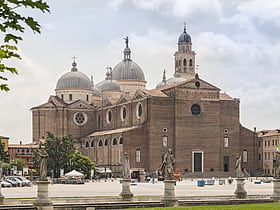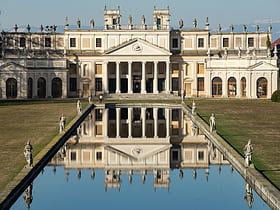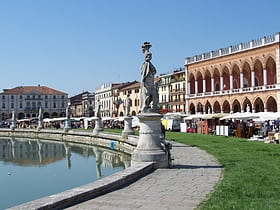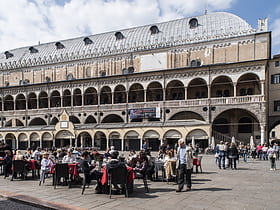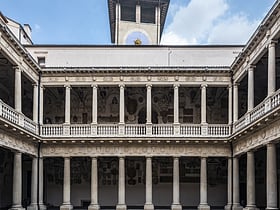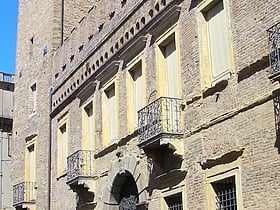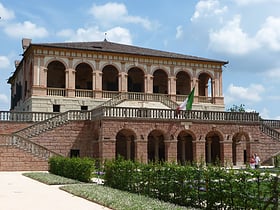Padua: Vernacular Architecture
Places and attractions in the Vernacular architecture category
Categories
- Church
- Historical place
- Sacred and religious sites
- Vernacular architecture
- Museum
- Architecture
- Palace
- Unesco
- Square
- Gothic architecture
- Baroque architecture
- Art museum
- Specialty museum
- Historic walking areas
- Bridge
- Park
- Universities and schools
- Sport
- Sport venue
- Monuments and statues
Basilica di Santa Giustina
Historic abbey with notable artwork Nestled in the historic heart of Padua, Italy, the Basilica di Santa Giustina is a beacon of spiritual and architectural grandeur. This imposing edifice, affiliated with a Benedictine monastery, stands as a testament to the city's rich religious heritage and its...
Villa Pisani
Baroque palace with a Tiepolo fresco Nestled in the historic city of Padua, Italy, Villa Pisani stands as a testament to the opulence of 18th-century Venetian nobility. This grand museum, originally built as a palatial summer residence for the powerful Pisani family, is a marvel of architectural...
Prato della Valle
Prominent square with many statues Nestled in the heart of Padua, Italy, Prato della Valle stands as one of the largest and most beautiful squares in Europe. With an expanse of 90,000 square meters, it is not only a monumental space but also a symbol of Padua's rich cultural and historical heritage.
Palazzo della Ragione
Medieval civic building with food shops Nestled in the heart of Padua, Italy, the Palazzo della Ragione stands as an enduring testament to the city's rich history and architectural grandeur. This grand palace, once the fulcrum of Padua's judicial and administrative life, now serves as a multi-dimensional...
Bo Palace
Bo Palace, nestled in the heart of Padua, Italy, is a historic gem that exudes the grandeur of the Renaissance. Known locally as Palazzo del Bo, this understated yet magnificent structure has been the main seat of the University of Padua since 1493.
Palazzo Zabarella
The Palazzo Zabarella is a medieval, fortress-like palace with a crenellated roof-line, and corner tower, located on Via San Francesco 27 in the center of Padua, Italy.
Villa dei Vescovi
The Villa dei Vescovi is a Renaissance-style, rural palatial home located in the neighborhood or frazione of Luvigliano, within the city limits of Torreglia, province of Padova, region of Veneto, Italy.
Ovetari Chapel
The Ovetari Chapel is a chapel in the right arm of the Church of the Eremitani in Padua. It is renowned for a Renaissance fresco cycle by Andrea Mantegna and others, painted from 1448 to 1457. The cycle was destroyed by an Allied bombing in 1944: today, only two scenes and a few fragments survive, which have been restored in 2006.
Villa Giovanelli Colonna
The Villa Giovannelli Colonna is a rural palace located in Noventa Padovana, in the region of the Veneto near Padua, northern Italy, which once was famous for its splendid decorations.
Villa Giusti
Villa Giusti or Villa Giusti del Giardino is a villa in Mandria, outside of Padua in northern Italy. It is notable for being the site of the signing of the Armistice of Villa Giusti that ended the First World War on the Italian Front.
Map

